The Tiguan has the initial advantage – a new model has been launched while the original Karoq soldiers on.
We’ll compare the Karoq against the new and the last-shape Tiguan, to give the Skoda a fair fight and to make sure you get the best SUV for you.
Browse our exciting selection of used Skoda Karoq cars and used Volkswagen Tiguan cars for sale.
Skoda Karoq vs VW Tiguan compared
| Skoda Karoq | Volkswagen Tiguan |
Pros:
| Pros:
|
Cons:
| Cons:
|
Styling and design
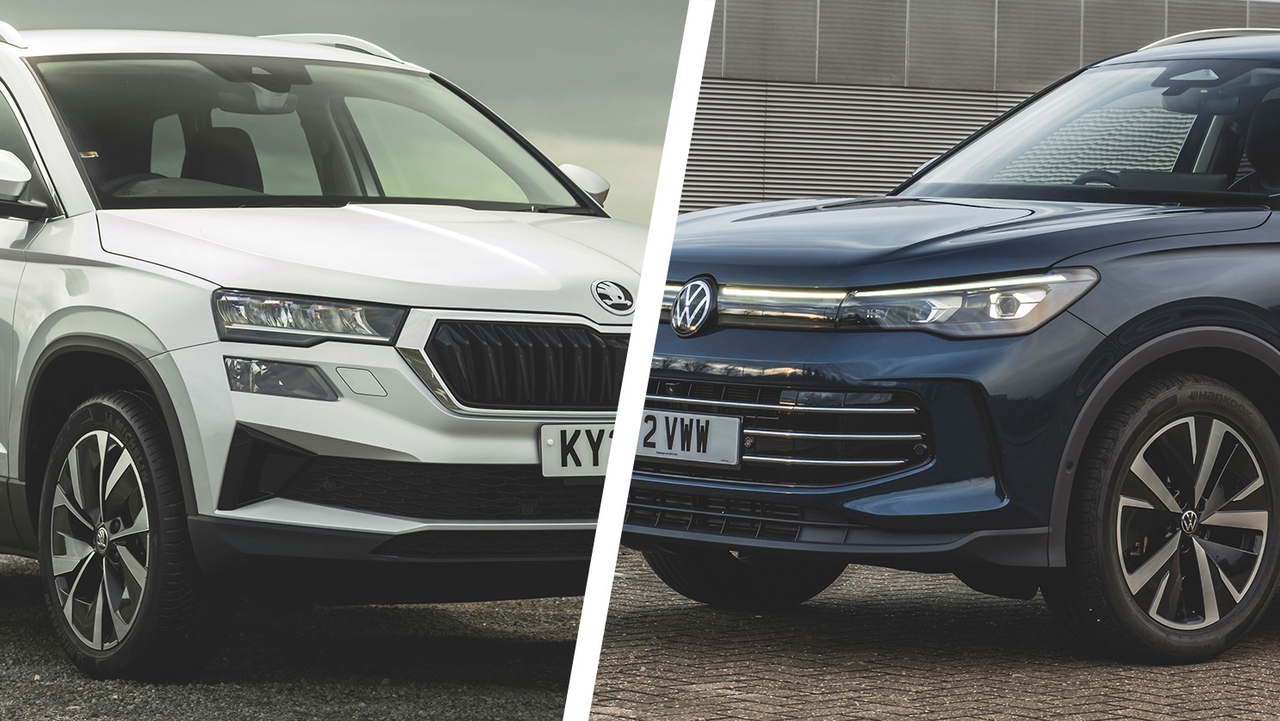
Both of these cars have sturdy, smart styling that’s a little conservative compared to more out-there rivals like the Hyundai Tucson, Kia Sportage and Peugeot 3008. The side profiles of the Karoq and the previous Tiguan are very similar, giving you the clue that these popular SUVs share plenty of parts.
The new Tiguan has taken inspiration from the bigger VW Touareg, with a much wider front grille and intricate rear lights connected by a light bar across the bootlid. Whether you pick the Karoq or Tiguan, you’ll have the choice of demure entry-level models or sportified top-spec R-Line and Sportline models with black detailing and bigger wheels.
Interior and practicality
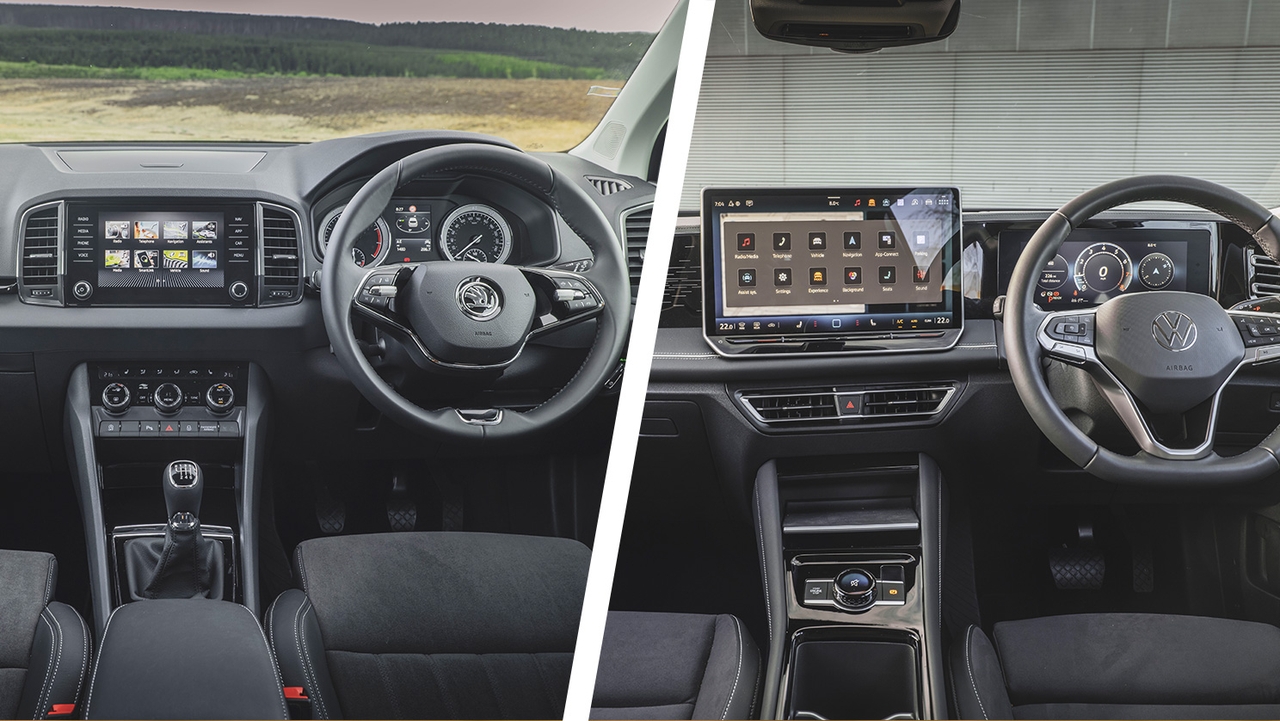
Skoda’s recent interior design has summed up the brand’s values perfectly – intuitive to use with just enough posh touches to stop it feeling cheap. The eight or nine-inch touchscreen is neatly integrated into the dashboard, perfectly placed to be easily accessible but not impact front visibility.
Volkswagen went through a four-year period of having a pretty horrible infotainment system, but the Tiguan has managed to mostly avoid that. The brand’s latest effort includes a whopping 13-inch screen with a huge focus on personalisation. You can tailor the home screen and the top icons to your preferences, whether that’s a shortcut to the driver assistance settings or an easy way to get to your favourite radio stations.
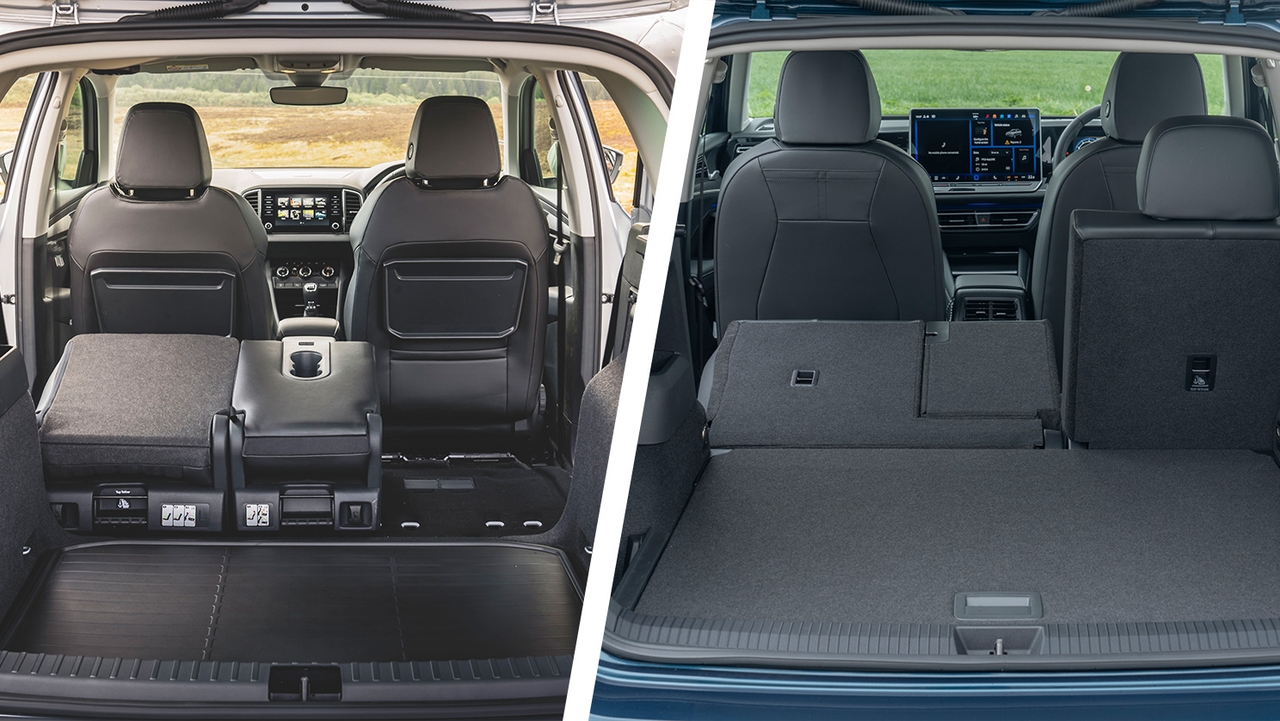
Rear-seat space in both is excellent, while the Karoq’s 520-litre boot is practical enough for family life. There are standard-fit roof rails if you need even more carrying capacity. But the Karoq’s party trick is its VarioFlex rear seats, which are fitted on mid-spec SE L cars and up. These can slide forwards and backwards to free up a bit more boot space, recline for extra comfort and be removed completely, for when you need a van.
The latest Tiguan boasts an astonishing 652-litre boot (490 litres for plug-in hybrids), and also gets reclining rear seats to help your passengers enjoy long journeys a little bit more.
Engines and performance
Kicking off in the Karoq is a teeny 110hp 1.0-litre petrol engine. That’s smaller than two pints of milk, but it’s surprisingly potent and feels more than enough to whisk the Skoda up to speed, while offering decent fuel economy of around 45mpg. Then there’s a 150hp 1.5-litre engine with the option of an automatic gearbox and a 2.0-litre 190hp petrol with the auto and four-wheel drive. Diesel buyers are still catered for with a 2.0-litre TDI engine, which has been offered in 116hp and 150hp versions.
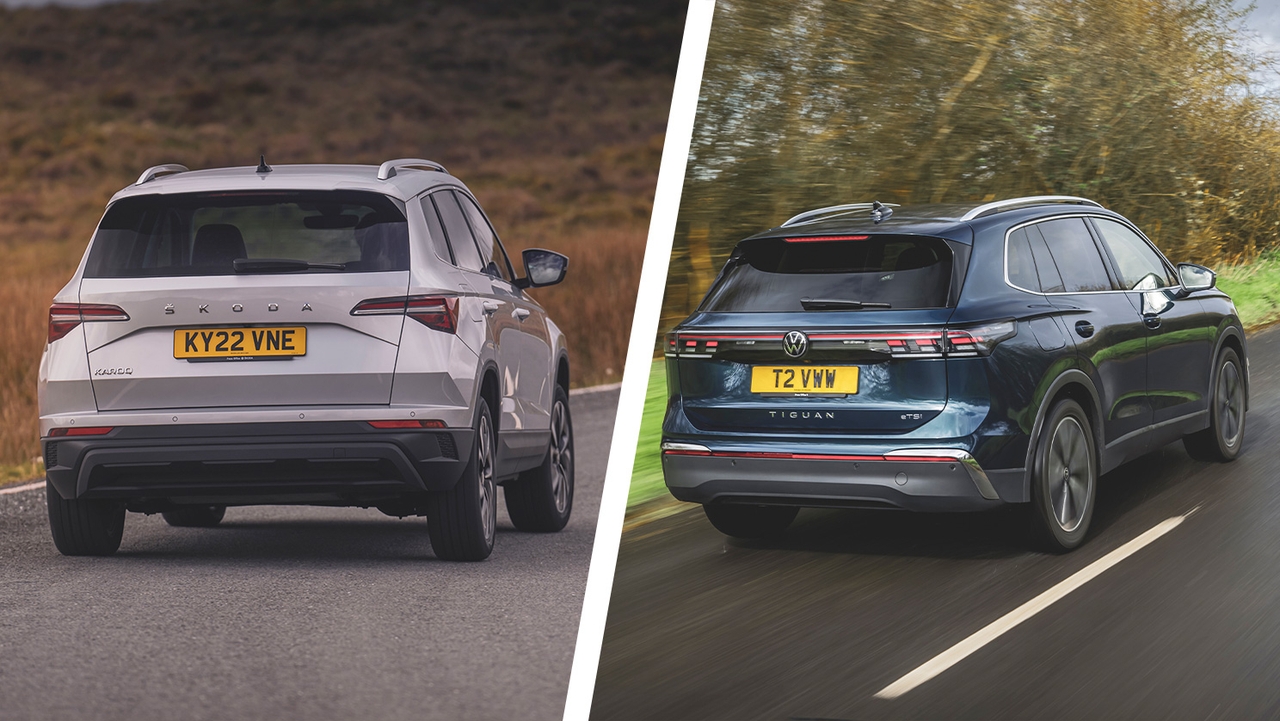
What you won’t get in the Karoq is any sort of hybrid, nor a fast performance model. Tiguan buyers can choose an eHybrid plug-in hybrid model – apparently capable of 700mpg and 77 miles of electric driving – or mild-hybrid versions of the 1.5 petrol engine that’s fitted in the Karoq. Meanwhile, the previous model also included the 320hp Tiguan R, which manages to be a hot hatch and a comfy SUV all in one. The current one doesn’t get quite so much power yet, but the 265hp 2.0-litre petrol – also used in the Golf GTI – should excite family-focused petrolheads.
Value and reliability
The Karoq is the clear winner here, whether you buy new or used. The entry-level Karoq is some £7,000 cheaper than the Life-spec Tiguan, while a 2023 Karoq is a couple of thousand pounds cheaper than a like-for-like Tiguan. As we write this, you can snag a three-year-old Karoq for little more than £200 per month, while Tiguan models are closer to £300.
Both of these cars should be pretty reliable, with tried-and-tested engines and parts being shared between the two models. If you want total peace of mind, consider taking out an extended warranty when you purchase from Motorpoint.
Used Skoda Karoq vs used Volkswagen Tiguan
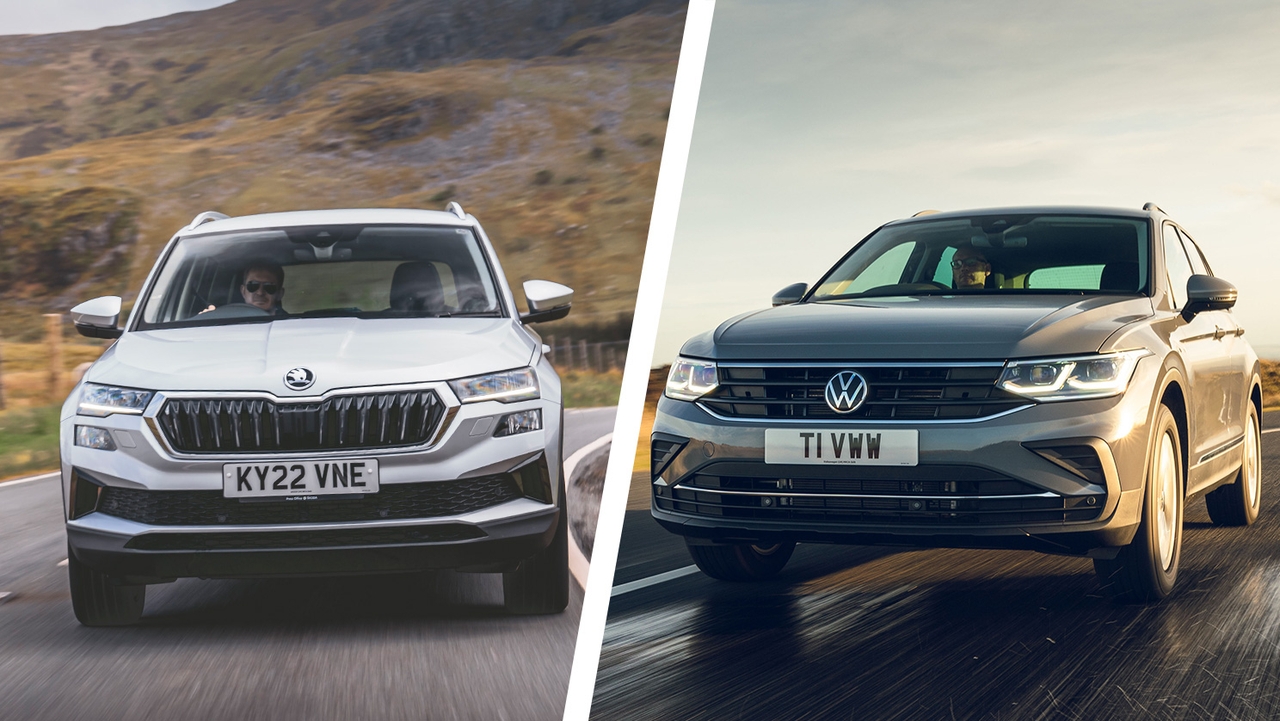
The Skoda Karoq and the 2016-2024 Tiguan are very closely related. The Tiguan has the premium image and granite-solid reputation, but the Karoq is arguably just as talented from behind the wheel. As we’ve just mentioned, the Karoq is a better-value proposition than the Tiguan, both in terms of buying and insuring.
Last-shape Tiguans have a more restrained interior than the current car, with a similar dashboard layout to the Karoq. However, there are touch panels almost everywhere that you’d expect proper buttons to be – the steering wheel buttons, climate control and touchscreen shortcuts – and the Skoda’s buttons are easier to use while driving.
Which is best?
The Tiguan is rightly popular – it exudes confidence and sophistication, offers a premium-ish package and has more space than a studio flat. What’s more, the Tiguan is decently economical, reliable and has a wide choice of engines and trim levels.
While the Karoq doesn’t have the premium kudos or the same exhaustive range of engines as the Tiguan, it’s often considerably cheaper while offering most of the same qualities. The Karoq is one of our very favourite SUVs, so it’s the one we’d pick with our own money.
Read our in-depth Skoda Karoq review and Volkswagen Tiguan review, or read our guide to the best midsize SUVs.

































